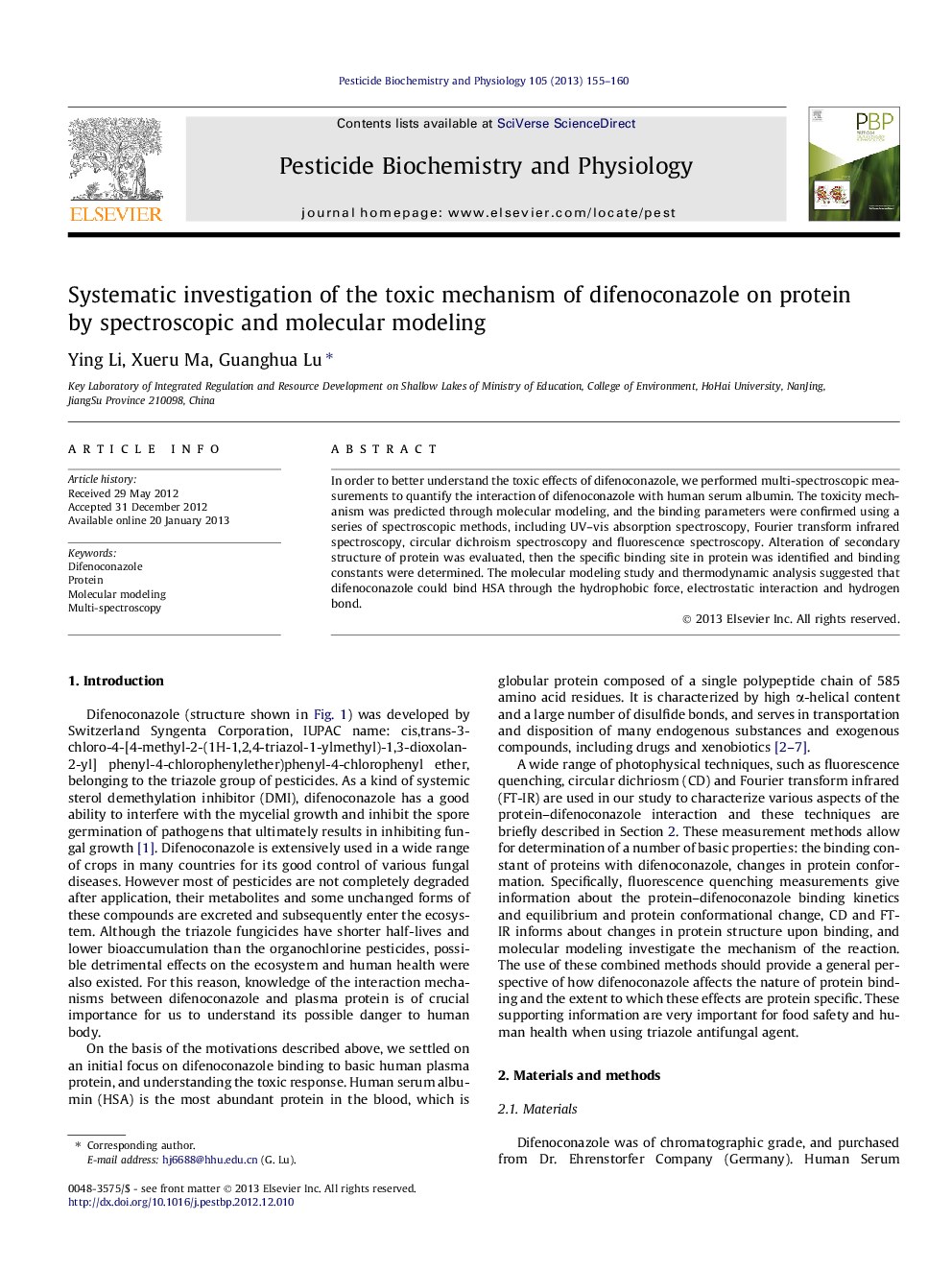| Article ID | Journal | Published Year | Pages | File Type |
|---|---|---|---|---|
| 2009489 | Pesticide Biochemistry and Physiology | 2013 | 6 Pages |
In order to better understand the toxic effects of difenoconazole, we performed multi-spectroscopic measurements to quantify the interaction of difenoconazole with human serum albumin. The toxicity mechanism was predicted through molecular modeling, and the binding parameters were confirmed using a series of spectroscopic methods, including UV–vis absorption spectroscopy, Fourier transform infrared spectroscopy, circular dichroism spectroscopy and fluorescence spectroscopy. Alteration of secondary structure of protein was evaluated, then the specific binding site in protein was identified and binding constants were determined. The molecular modeling study and thermodynamic analysis suggested that difenoconazole could bind HSA through the hydrophobic force, electrostatic interaction and hydrogen bond.
Graphical abstractFigure optionsDownload full-size imageDownload as PowerPoint slideHighlights► We have studied the interaction between difenoconazole and HSA. ► We have investigated the quenching mechanism involved. ► The changes in the secondary structure of HSA were studied. ► Several spectroscopic techniques have been used in this research.
